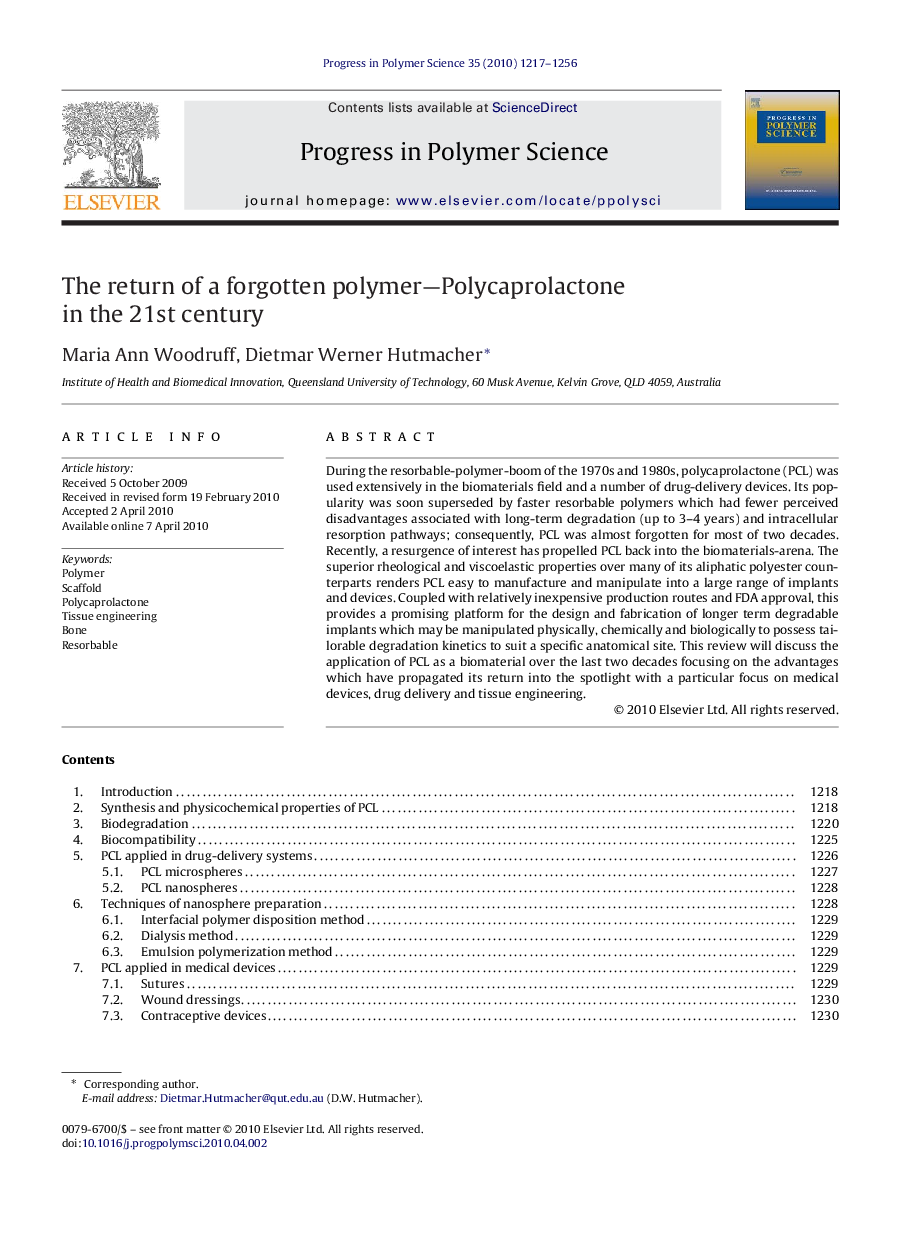| Article ID | Journal | Published Year | Pages | File Type |
|---|---|---|---|---|
| 5208517 | Progress in Polymer Science | 2010 | 40 Pages |
During the resorbable-polymer-boom of the 1970s and 1980s, polycaprolactone (PCL) was used extensively in the biomaterials field and a number of drug-delivery devices. Its popularity was soon superseded by faster resorbable polymers which had fewer perceived disadvantages associated with long-term degradation (up to 3-4 years) and intracellular resorption pathways; consequently, PCL was almost forgotten for most of two decades. Recently, a resurgence of interest has propelled PCL back into the biomaterials-arena. The superior rheological and viscoelastic properties over many of its aliphatic polyester counterparts renders PCL easy to manufacture and manipulate into a large range of implants and devices. Coupled with relatively inexpensive production routes and FDA approval, this provides a promising platform for the design and fabrication of longer term degradable implants which may be manipulated physically, chemically and biologically to possess tailorable degradation kinetics to suit a specific anatomical site. This review will discuss the application of PCL as a biomaterial over the last two decades focusing on the advantages which have propagated its return into the spotlight with a particular focus on medical devices, drug delivery and tissue engineering.
